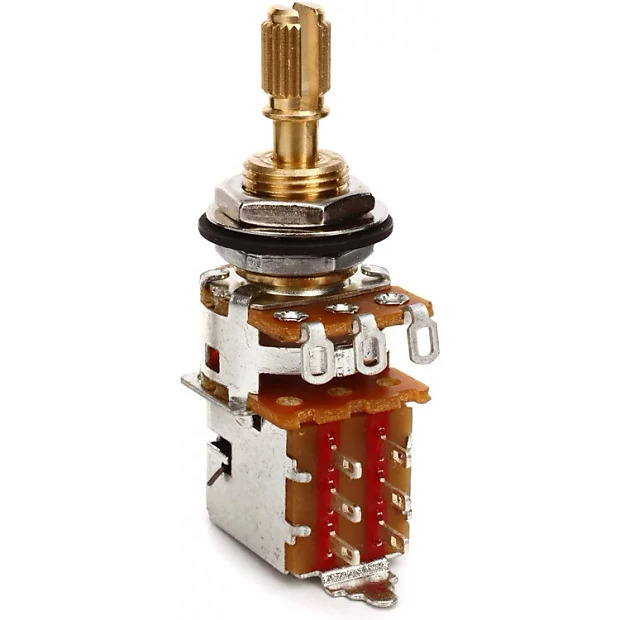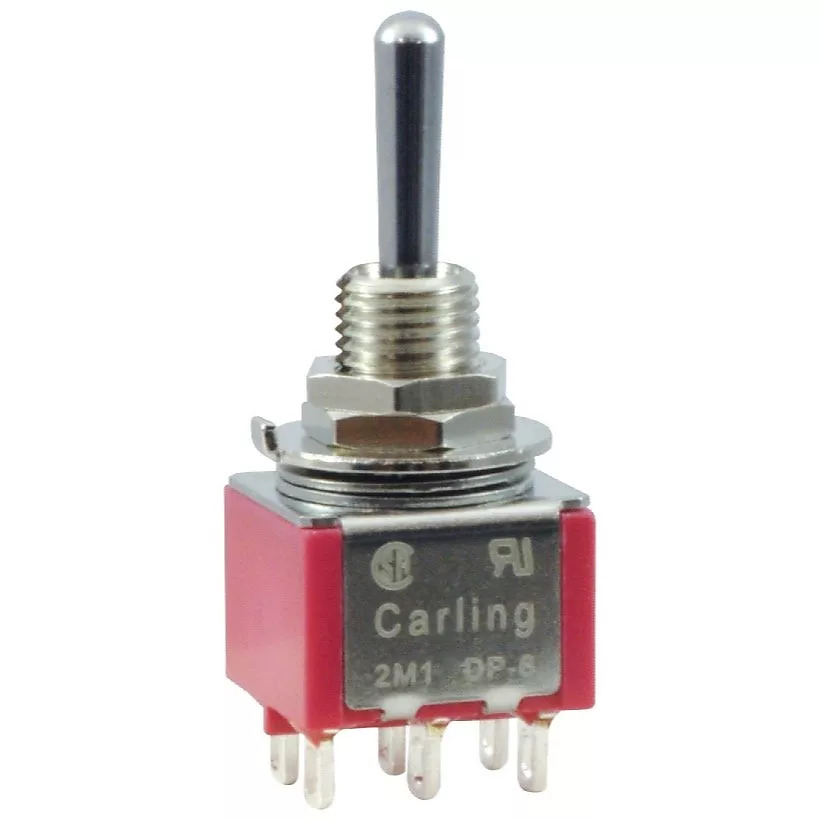
By Ed Malaker
Posted 03/23/2019
Push-Pull Pot FAQ
What is a coil-split pickup?
A coil-split pickup is a humbucker that is split in such a way that it only uses one of its two coils. This is useful to guitarists who use humbuckers but occasionally want a single-coil sound.
How do I split a humbucker coil?
A humbucker pickup is split by wiring it to a switch that can short one of the coils at a time. Here at Humbucker Soup, we actually have a few articles that illustrate different step-by-step methods of coil splitting your humbucker.
 You might also like this HumbuckerSoup article: Mini Toggle Switch FAQ – Coil-Split a Humbucker Pickup
You might also like this HumbuckerSoup article: Mini Toggle Switch FAQ – Coil-Split a Humbucker Pickup
Are volume and tone pots the same?
The answer is yes and no. Technically, your volume pots and your tone control parts are identical. The most common values of these pots are 250k and 500k, but other values do exist. Tone control works by adding a capacitor to a volume pot in a circuit that helps roll off high-end frequencies.
However, there are two different types of volume pots available: a linear taper and an audio taper. The taper relates to the way the volume pots travel from full off to full on. The linear taper, as the name suggests, travels smoothly and evenly from off to full on, this type of taper probably works as you would expect it to. An audio taper uses a logarithmic taper that more accurately represents the way our ears work and most of the volume boost is toward the end of the taper.
You can use either type of pot taper for your volume control and your tone control, but they do act differently and you will have to experiment for yourself to decide which one you like better. The general recommendation is to use the audio taper for your tone control, and the linear taper for your volume control.
 You might also like this HumbuckerSoup article: Mini Toggle Switch (DPDT) – Use This to Coil-Split a Humbucker Pickup
You might also like this HumbuckerSoup article: Mini Toggle Switch (DPDT) – Use This to Coil-Split a Humbucker Pickup
What is a push-pull switch?
A push-pull switch is actually a type of volume pot with a special mechanism built into the shaft, which allows you to pull the shaft out, or push it back in, to flip the switch. This can be very useful to a player, because a guitar can have several volume and tone pots already installed and push-pull switches allow you to add additional ones to your guitar by changing these pots, instead of doing any permanent modifications to it.
If you need to wire your guitar to split pickups, or for any other on/off modifications, the push-pull switch is an ideal way to go.
What are the difference between 250k and 500k pots?
The 250k and 500k values are in reference to the amount of resistance, or load, the potentiometer applies to a circuit. Volume pots also come in Mega-Ohm, No Load, and several other values.
It might be helpful to pretend for a minute that a volume pot is a gate around a schoolyard and the high-frequencies that your guitar produces are children. In this scenario, the 250k and 500k represent the number of bars that are in the gate to prevent the children from getting out.
Some children will always find a way to get out, but a higher value pot will keep more of them inside and this leads to a brighter sound.
Single-coil pickups can sound very bright and sometimes even harsh, so we often use the lower value of 250k pots for those pickups. Humbucking pickups, by nature of their design, phase out some high frequencies, so we commonly use larger 500k pots to try to retain the high frequencies we have left.
As I said though, there are many values available, and there are also many styles of pickups and woods that lead to all types of tones, bright and dark. Experimentation is the only way to decide the right value you will need to achieve the perfect sound for you.
If you’ve found this article helpful, please feel free to share this with your friends on Facebook and Twitter. For more articles on guitar electronics, visit humbuckersoup.com.
